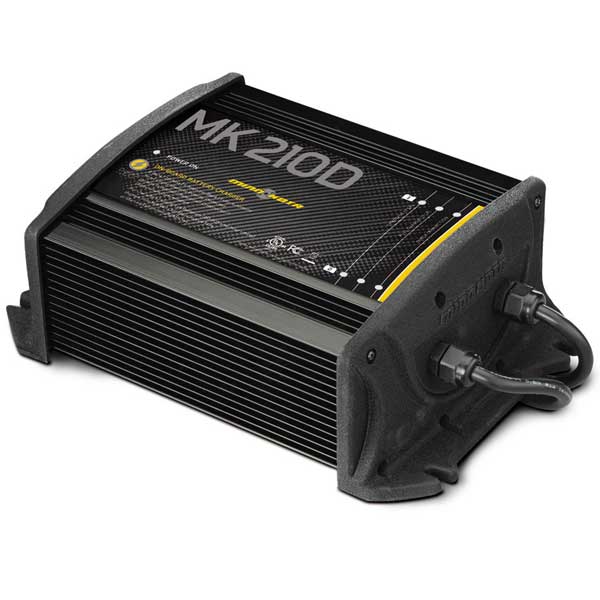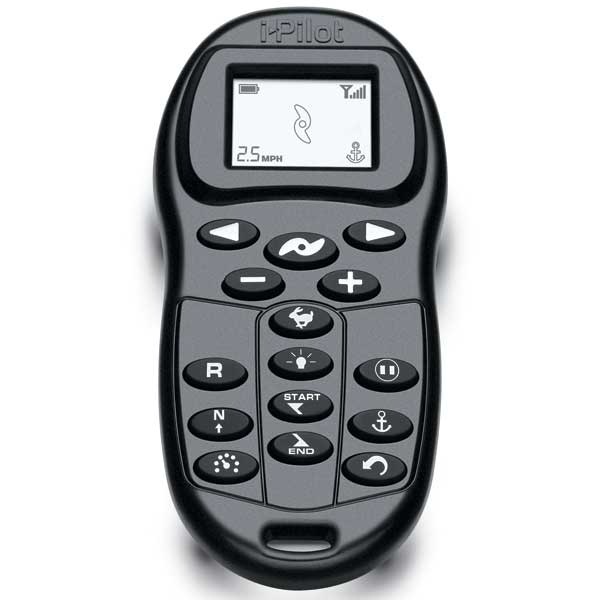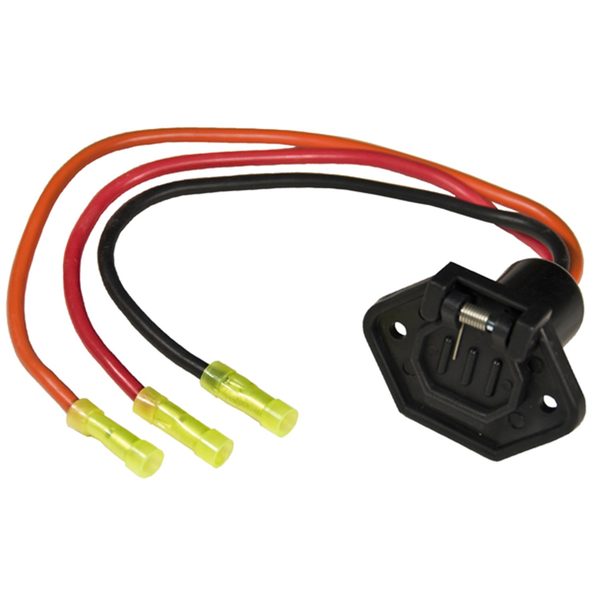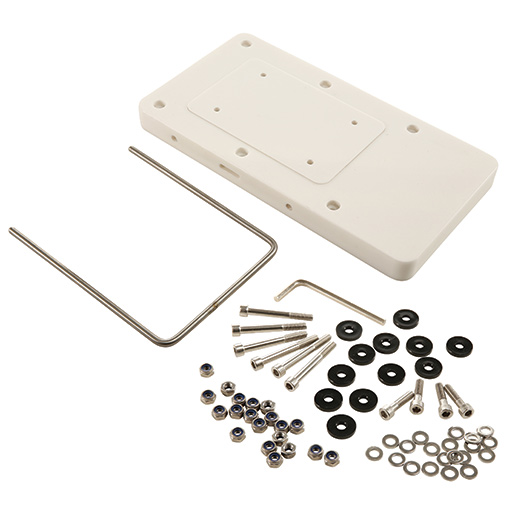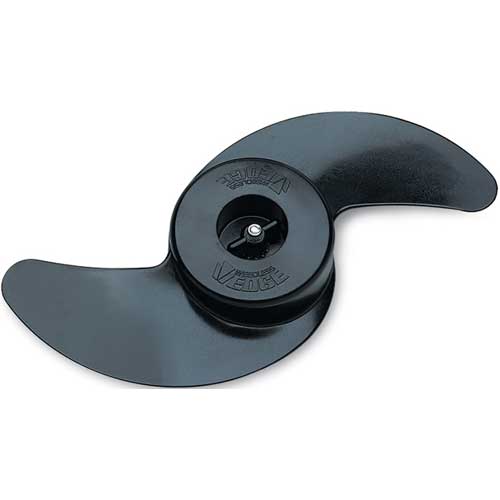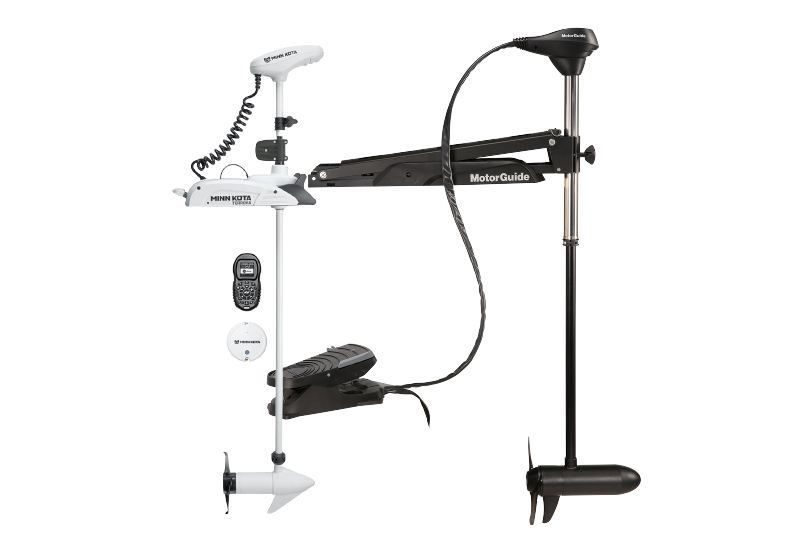
Bow Mount Trolling Motors
Bow mounted trolling motors are convenient if you fish primarily in an open bow-rider or on the fore-deck of a bass boat. To prevent damage from groundings, a spring-loaded mount allows the motor to swing away on impact.
Shop Now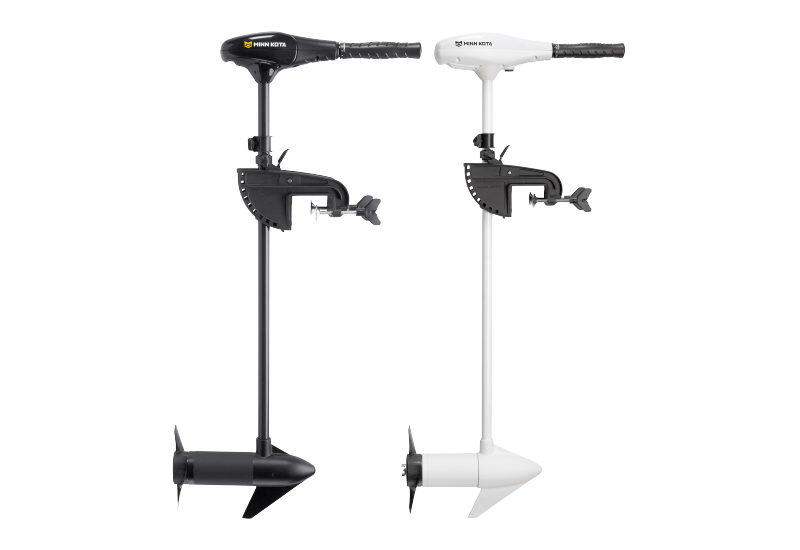
Transom Mount Trolling Motors
Transom-mount motors feature brackets that adjust to different angles and heights so the motor's shaft is immersed at the right depth. On very small craft or on a light sailboat the trolling motor often doubles as an auxiliary engine and is operated by a tiller.
Shop Now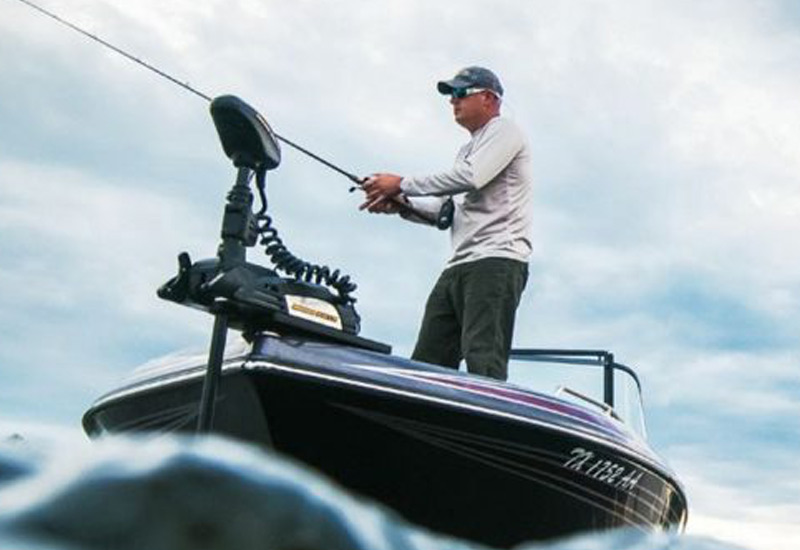
Get the Right Size Trolling Motor
Is bigger always better? This article answers that question and a host of others to help you select a trolling motor that's right for you.
Learn MoreLearn About Trolling Motors
Trolling motors are electric outboard motors that push (or pull) fishing boats, pontoon boats, small sailing auxiliaries and other small craft. Most operate using external 12V deep cycle batteries individually or arranged in series to boost voltage from 12V to 24V or 36V. West Marine offers trolling motors by Minn Kota and Motorguide.
How They Work
Electric current creates a magnetic field that powers the permanent magnet motor in the propeller hub, which turns the propeller. Trolling motors are turned on and off frequently and sometimes run for just a few seconds to maneuver slowly or to hold the boat steady in one spot.
Trolling Motor Components
- The power head on top of the motor assembly houses the electric circuit board, which controls the functions of the motor.
- The shaft connects the power head and propeller hub. It is hollow and doubles as a cable conduit. It can be made of aluminum, chrome, stainless steel or graphite composite. Composite shafts are light, stiff, impact resistant and extremely durable, but can develop steering torque in powerful motors.
- The watertight propeller hub houses the electric motor and the propeller shaft.
- Propellers can have two, three or four blades. Weedless props have specially shaped leading edges to keep kelp and weeds from fouling them.
Features to Look for in a Trolling Motor
- Mounting location
- Freshwater vs. Saltwater
- Shaft Length
- Thrust
- Power Consumption
- Controls
- Pulse Modulation
- Autopilot Compatibility
Mounting Location
Trolling motors are designed to mount to either the bow or transom of a boat. Bow-mounted motors are convenient if the fishing is done primarily from an open bow or off the foredeck of a bass boat. To prevent damage in case of collision, a spring-loaded mount allows the motor to swing away on impact. On a very small craft or on a light sailboat, the trolling motor often doubles as an auxiliary engine and is mounted on the transom where it can be operated by a tiller from the cockpit. Transom-mount motors also feature brackets that adjust to different angles and heights so the motor’s shaft is immersed at the proper depth. Trolling motors can also be mounted to the top of the cavitation plate on a big outboard motors or outdrives. When boats equipped in this way are on a plane, the trolling motor is out of the water.
Freshwater vs. Saltwater
Trolling motors designed for use in salt water offer greater resistance to corrosion and have better seals on the mechanical and electrical components.
Shaft Length
The standard shaft length of trolling motors is 42 inches. To determine the right length for your boat, measure the distance from where the shaft is mounted on the deck or the transom to the water, then add 16 inches (for MotorGuide) or 20 inches (for Minn Kota) and select the next closest measurement offered by the manufacturer. We recommend longer shafts for rough water so the prop stays below the surface when the boat pitches and rolls. Look for the hub assembly to be approximately six inches below the water surface. Fine-tune the motor’s vertical position with the adjustment on the mount.
Thrust
The performance of electric trolling motors is rated in pounds of thrust. As a rule of thumb 72 to 75 pounds of thrust roughly equals one horsepower or 746 watts of electrical power. A typical 12V motor that draws 60 amps consumes approximately 720 watts. The equation of power is easy: the higher the voltage, the higher the thrust. Trolling motors are offered in 12V, 12V/24V, 24V and 36V versions, with the most powerful ones offering more than 100 pounds of thrust, which makes them suitable for moving heavy vessels such as pontoon boats. Maximum thrusts at different voltages are approximately 12V/55lb., 24V/75lb. and 36V/109lb.
More thrust is most always better. At a minimum, we recommend five pounds of thrust for every 200 pounds of a vessel’s gross weight. While larger boats need more thrust, we also recommend you consider wave action, wind and current when choosing a trolling motor. Erring on the stronger side has its benefits because stronger motors run more efficiently at lower speeds and provide a safety cushion for handling wind, waves and current.
Power Consumption
Think about the size of your boat, how much battery capacity you can safely install to satisfy the energy demands of a trolling motor, and whether or not you will be able to charge the batteries when underway. Check the amp draw of the models you have in mind. A 24V model with 54lb. of thrust may only draw 28 amps, while a 12V model with 44lb. of thrust can draw 36 amps. The rule of thumb is that larger motors require more battery capacity. If you fish from dawn to dusk with a boat of 16’ or larger, you’ll probably want 24V Serious anglers who spend a lot of time on the water will appreciate the endurance of a 36V motor.
Controls
For steering and controlling speed, stern-mounted motors typically have mechanical twist tillers. Another variation is a multi-position handle featuring a stirrup squeeze control for on/off and speed. Bow-mounted motors may be equipped with a mechanical or electrical foot pedal that allows hands-free operation so anglers can focus on fishing. We like cordless remote controls because they transmit radio signals to the power head so the motor can be operated from anywhere on the boat without cords or wires to trip over. Freedom of movement increases safety too, because it allows better weight distribution on the boat. Two other cool control features we recommend are a momentary switch for short power bursts, which helps re-position the boat and a bypass switch for running the motor on constant high speed.
Pulse Modulation
Referred to by MotorGuide as “Digital Guardian” and by Minn Kota as “Maximizer”, pulse modulation increases a trolling motor’s energy efficiency at slower speeds by changing incoming current into pulsing current, which allows the motor to run at infinitely variable speeds without the power loss incurred by the resistance of gears. Digital technology also reduces interference with sonar, a problem with analog motors.
Autopilot Compatibility
When you fish, following shorelines or sandbars at a distance or keeping the boat stationary above underwater structures where the big ones are hiding, requires a dedicated operator. If you fish alone, this job can be handled by an autopilot.
Related: Shop Fishfinders

